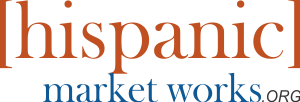It’s risky business for any company not to prioritize the Hispanic market, but many auto insurance companies aren’t fully reaching out to this demographic. Strange thing is, most companies run campaigns that are easily adaptable to multicultural consumers.
We may be entering an era where young people buy less cars, car-sharing services continue to expand and urban living means less people spend their transit time behind the wheel. But that hasn’t stopped auto insurance companies from placing a high premium on the battle for new and existing customers.
In 1998, the already highly competitive industry spent $500 million on advertising. Now it spends more than $4 billion, a good chunk of which goes toward high-cost, high-profile and highly rewarding sports marketing and sponsorships.
From Allstate’s involvement with NCAA football and Major League Soccer to GEICO’s sponsorship of a Sprint Cup Series race, five MLB teams, one MLS team, six NBA teams and eight NFL teams, auto insurance brands and sports marketing platforms are so intertwined they almost seem inseparable in the eyes of consumers.
According to IEG, approximately 67% of all live events deals secured by auto insurance brands focus on pro or amateur sports.
So why aren’t more insurance firms investing part of all those monthly premiums in directly appealing to the growing Hispanic market with this massive sports spend? An analysis of the field suggests a few, such as Allstate, have made concerted efforts which have paid off, while others, such as GEICO, don’t appear to believe in that type of segmentation.
But that yes-or-no binary misses a key point. Comparing Allstate’s successful sponsorship of the Mexican National Soccer team to State Farm’s Cliff Paul campaign, it’s clear they’re meant for a different audience. But it’s also clear that State Farm could see a strong response from Hispanics by using their current pro sports marketing as a template for multicultural outreach, suggesting auto insurance companies can quickly make an impact by altering their sponsorship strategies.
As official U.S. sponsors of the Mexican National Team, Allstate clearly sets an example that seems hard to follow. Besides activating “Fútbol Fiesta” experiential marketing promotions during the Mexican National Team’s annual U.S. tour, Allstate also sponsors “Sueño MLS,” a competition that provides amateur players with the chance to earn a spot on an MLS team roster, as well as a series of soccer clinics for children nationwide throughout the year, a savvy move since 34 percent of MLS fans are Hispanic, according to Nielsen.
As the official auto, home and life insurance sponsor of the MLS and the United States Soccer Federation (USSF), Allstate’s culturally relevant slogan “Protección es la Jugada” just as easily applies to their investment in this growing demographic.
Celebrity leverage and activity outlines a template that’s easily directed towards the Latino market; think of how a similar campaign with Hispanic players such as Pau Gasol or Manu Ginóbili may perform. “NBA audiences are very young and heavily African-American and Latino, and allow us to really go hard after a multicultural audience,” Pam El, marketing vice president at State Farm said to the New York Times. “And we believe that Chris Paul is going to be attractive to those fans.”
Sports sponsorships are a proven way to reach the Hispanic demographic, where 94 percent of men self-identify as sports fans, and 56 percent call themselves avid fans, according to Nielsen research. If that signal isn’t registering, the report flatly states that the “Hispanic sports fan in the U.S. is quickly becoming a driving force in terms of viewership.” Luckily for most auto insurance firms looking for a boost in that demo, the sports sponsorship game is one they already know how to play.





